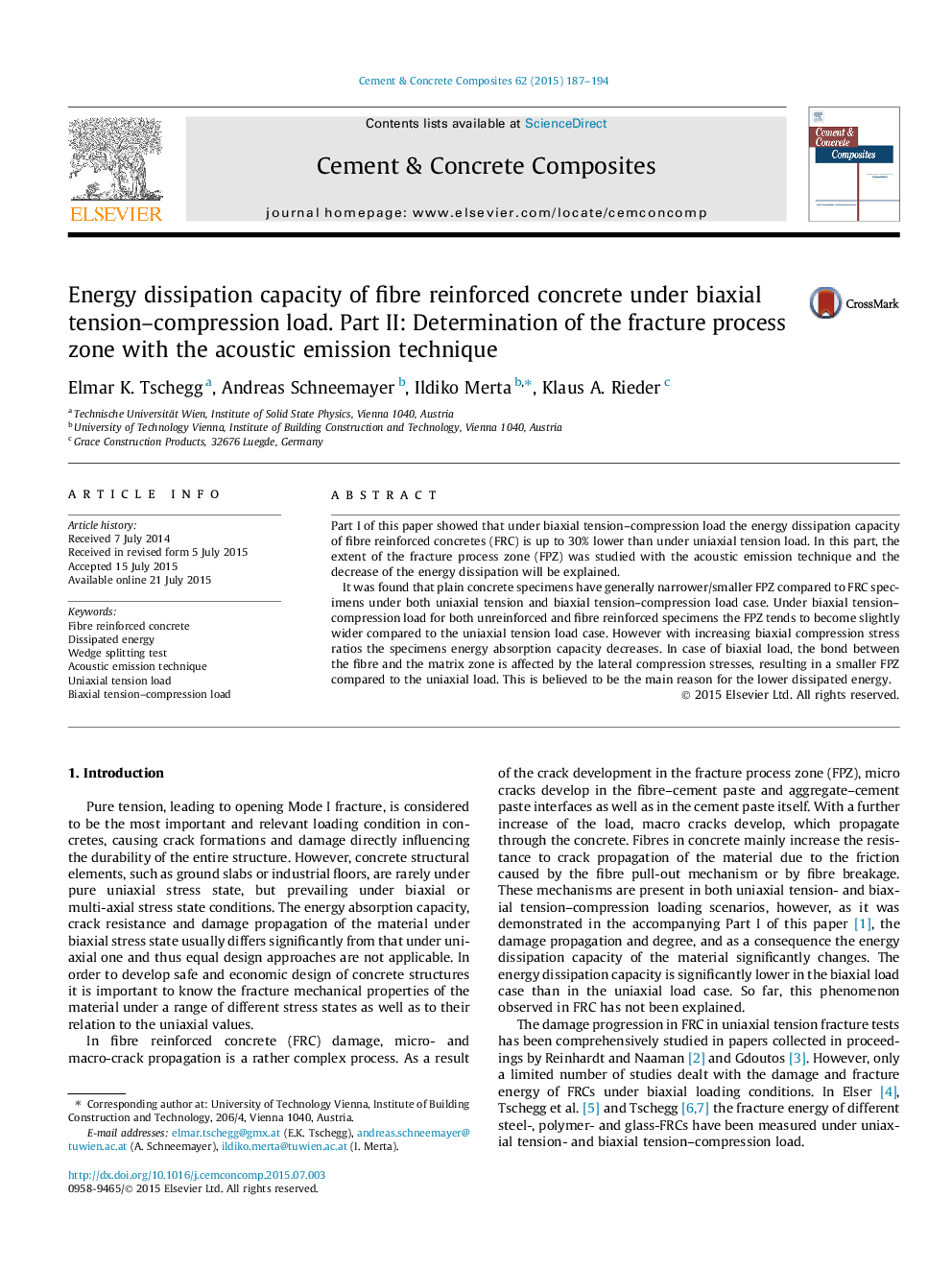| Article ID | Journal | Published Year | Pages | File Type |
|---|---|---|---|---|
| 1454500 | Cement and Concrete Composites | 2015 | 8 Pages |
Part I of this paper showed that under biaxial tension–compression load the energy dissipation capacity of fibre reinforced concretes (FRC) is up to 30% lower than under uniaxial tension load. In this part, the extent of the fracture process zone (FPZ) was studied with the acoustic emission technique and the decrease of the energy dissipation will be explained.It was found that plain concrete specimens have generally narrower/smaller FPZ compared to FRC specimens under both uniaxial tension and biaxial tension–compression load case. Under biaxial tension–compression load for both unreinforced and fibre reinforced specimens the FPZ tends to become slightly wider compared to the uniaxial tension load case. However with increasing biaxial compression stress ratios the specimens energy absorption capacity decreases. In case of biaxial load, the bond between the fibre and the matrix zone is affected by the lateral compression stresses, resulting in a smaller FPZ compared to the uniaxial load. This is believed to be the main reason for the lower dissipated energy.
